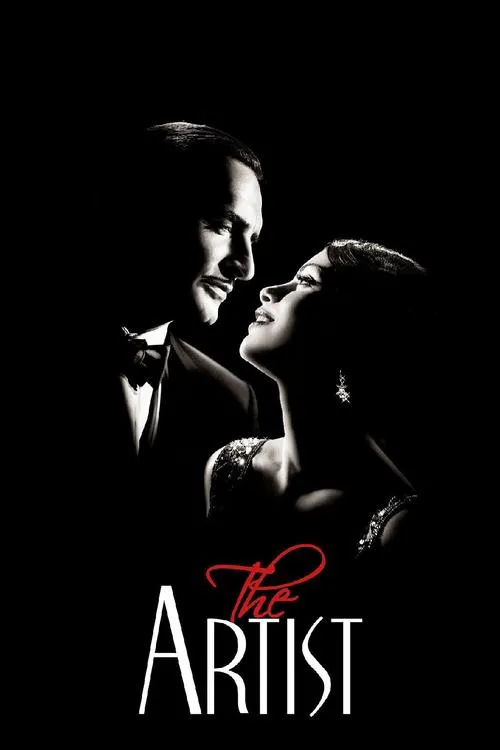The Artist

Plot
In the vibrant city of Hollywood, 1927, the world of cinema is undergoing a significant transformation. Silent movies, once the epitome of cinematic artistry, are slowly giving way to the advent of "talkies," as they are colloquially known. For George Valentin, a renowned and accomplished silent movie star, this seismic shift in the industry presents a daunting challenge to his career and existence. Initially, George is undaunted by the prospect of talking pictures supplanting his beloved silent films. With his charming on-screen persona and dashing good looks, he believes he will effortlessly navigate the impending change and remain a leading figure in the industry. His ego and confidence are bolstered by his successful movie, "A Russian Affair," which is met with critical acclaim and commercial success. However, as talkies begin to gain popularity and the public's fascination with the new technology grows, George starts to sense a threat to his livelihood. One fateful night, George has the opportunity to meet and be enchanted by Peppy Miller, a young dancer who has just caught his attention at an upscale dinner party. Unbeknownst to George, Peppy is about to become a major star in her own right, and their chance encounter at the party is merely the beginning of a complex and intertwined journey. As George becomes smitten with Peppy, he starts to take a more active interest in her burgeoning career, offering valuable advice, patronage, and mentorship. Despite George's genuine affection for Peppy, their relationship is ultimately a professional and emotional connection that is complicated by societal norms, personal insecurities, and the inevitable pressures of George's fragile career. As Peppy rapidly ascends the Hollywood hierarchy, George struggles to maintain his own relevance in the face of an industry shifting towards a new paradigm. As George's fortunes begin to decline, a combination of pride, stubbornness, and the crippling fear of obsolescence holds him back from adapting to the changing landscape. His pride refuses to accept the reality that the era of silent cinema is coming to a close, and his inability to adapt to the new technology results in his increasing isolation and marginalization in the industry. Meanwhile, Peppy Miller, now a rising star, faces her own set of challenges in Hollywood's grueling environment. Despite George's genuine affection for her, Peppy starts to realize that her connection to the charismatic but troubled actor has put her career at risk. The tension between their blossoming on-screen collaboration and their blossoming personal relationship creates an undercurrent of complexity and vulnerability. As George's grip on reality begins to slip, his fixation on maintaining his stardom and status becomes all-consuming. His fixation on the past leads him further and further into a world that no longer exists. The film's poignant and poignant cinematography, shot by cinematographer Guillaume Schiffman, captures George's growing despair and disconnection from the present reality. The tension between Peppy and George becomes almost palpable as she navigates her way between her burgeoning stardom and George's desperate attempts to cling to a bygone era. As Peppy's career gains momentum, George's isolation deepens, and his relationships with others – including his loyal but increasingly concerned wife, Doris – start to fray. The film's director, Michel Hazanavicius, uses striking visuals, meticulous production design, and a blend of humor, pathos, and poignancy to create a mesmerizing cinematic experience that is both a tribute to the Golden Age of Hollywood and a powerful exploration of the human spirit. As the film hurtles towards its bittersweet conclusion, George is left to confront the reality of his own mortality, the fragility of the cinematic art form, and the indomitable power of human resilience. Ultimately, "The Artist" is a moving, captivating, and elegiac tribute to the art of cinema and its early pioneers. As George's world crumbles around him, the film masterfully captures the ephemeral nature of stardom, the resilience of the human spirit, and the enduring power of creativity in the face of adversity.
Reviews
Recommendations





